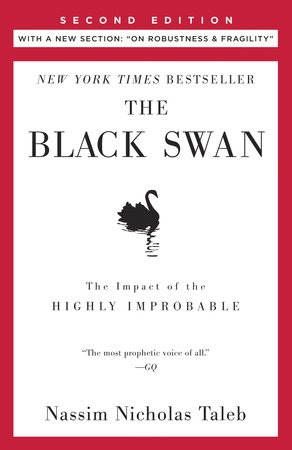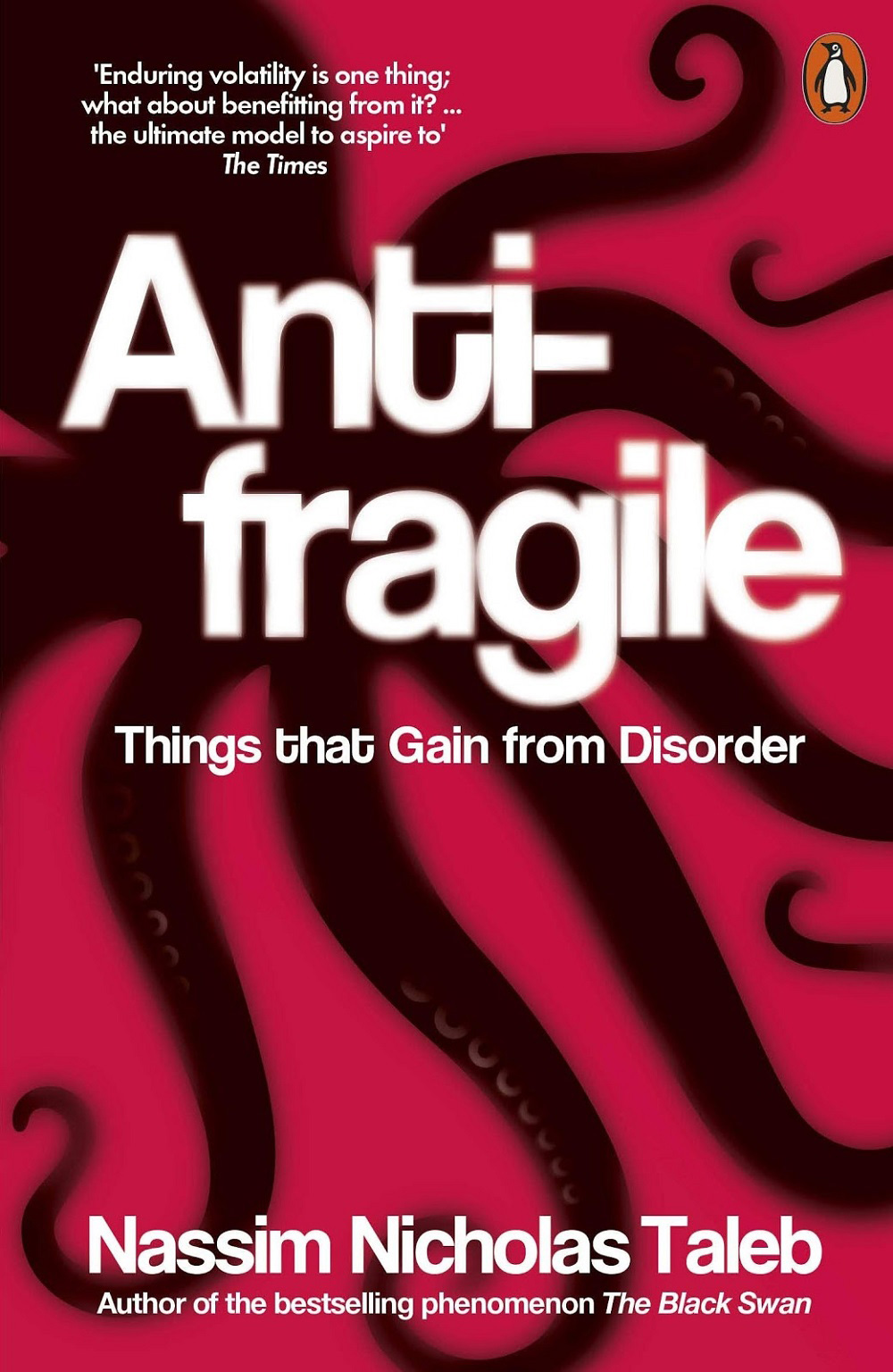Nassim Nicholas Taleb, Professor of Risk Engineering, is most famous for his book, The Black Swan: The Impact Of The Highly Improbable (Penguin, 2007). In it, he outlined the concept of ‘black swan events’. In essence, before there was a banking crisis, or a credit-crunch or a global pandemic, Taleb predicted that our world would be severely affected by events that are rare and difficult to predict – what he famously called ‘black swan events’.

The characteristics of black swan events
The three paramount characteristics of black swan events are rarity, extreme impact, and retrospective predictability. Black swans appear to come out of the blue to derail the ‘taken-for-grantedness’ of our current reality. Black swans completely overturn our thinking about how the world is made, or exists. When they appear, as if from nowhere, our first reactions are shock, disbelief, and incredulity. They flummox us.
If, in our previously naive state, we knew with absolute certainty that all swans were white, then a single black swan appears, our neat, cosy assumptions about the world are overturned. We tend to scramble to reassemble a half-cogent new way of putting the world together again, something Taleb puts like this:
‘Black Swans hijack our brains, making us feel we “sort of” or “almost” predicted them, because they are retrospectively explainable. We don’t realize the role of these Swans in life because of this illusion of predictability. Life is more, a lot more, labyrinthine than shown in our memory—our minds are in the business of turning history into something smooth and linear.’
Our political systems, our financial markets, our beliefs about the universe, our beliefs about people, can all flounder on the never-before-imagined interjection of a never-even-contemplated black swan event.

Is Covid-19 the ultimate black swan?
It is easy to see COVID-19 as the ultimate black swan. Its devastating impact on human lives, economies, whole countries, political reputations, health and social care services and stock markets make it difficult not to categorise it as a black swan. It was novel, impactful and, in retrospect could have been predicted.
Having said that, Nassim Taleb is adamant that devastating though it is, destructive on an unprecedented scale though it is proving to be, this pandemic is not a black swan it is a white swan – we should have seen it was probable once we saw the way Bird-flu, SARs, MERS, Ebola and Zika happened.
Let’s come back to that thought later.
Taleb’s latest thinking
The Black Swan: The Impact Of The Highly Improbable was published in 2007. Taleb’s thinking about how we might respond to black swans as they appear has continued apace. In 2012 he published Antifragile: Things that Gain from Disorder (Penguin Books).

The book opens with a short paragraph – How to love the wind – and these inspiring words:
‘Wind extinguishes a candle and energizes fire. Likewise with randomness, uncertainty, chaos: you want to use them, not hide from them. You want to be the fire and wish for the wind. This summarizes this author’s non-meek attitude to randomness and uncertainty. We just don’t want to just survive uncertainty, to just about make it. We want to survive uncertainty and, in addition—like a certain class of aggressive Roman Stoics— have the last word. The mission is how to domesticate, even dominate, even conquer, the unseen, the opaque, and the inexplicable.’
The central theme of the book is “antifragility,” which Taleb defines in the Prologue:
‘Some things benefit from shocks; they thrive and grow when exposed to volatility, randomness, disorder, and stressors and love adventure, risk, and uncertainty. Yet, in spite of the ubiquity of the phenomenon, there is no word for the exact opposite of fragile. Let us call it antifragile. Antifragility is beyond resilience or robustness. The resilient resists shocks and stays the same; the antifragile gets better.’
For Taleb, some things are fragile and some things are robust. And some things, biological life being a great example,are more than robust. They are adaptive and flexible, and they learn when put under pressure. This is what he calls ‘antifragile.’

There are some key lessons to learn here:
- Fragile items break under stress.
- Robust items resist shocks or pressure, by being resilient and unchanging
- Antifragile items get better under pressure.
- Antifragile systems under pressure adapt, flex and learn. Antifragile items get better when pressure is applied to them, and they work because they have extra capacity built into them to harness when under pressure.
Taleb characterises the fragile, robust and antifragile states or properties using a series of classical archetypes: Damocles, the Phoenix and the Hydra.
- In Greek mythology Damocles was a courtier of a Sicilian tyrant, Dionysius II, who is punished by being fed while a sword dangles over his head by a single horse-hair. One small stress to the string holding the sword will kill him. Damocles represents all things fragile.
- The phoenix myth demonstrates robustness. The bird dies and is reborn from its own ashes the next day, always returning to the same state when suffering a massive stressor. The Phoenix is the symbol of robustness.
- The mythical Hydra responds to any attack by replenishing itself and some – when one head is cut off, two grow back. The Hydra is the symbol of antifragility.
Taleb’s book outlines a rich array of supportive ideas and strategies. You can see Taleb in action here. Nassim Taleb: How Things Gain from Disorder 2013, Nassim Taleb’s lecture given in 2017 or see his more recent The Future Has Always Been Crazier Than We Thought | Nassim Nicholas Taleb.
Regenerating the post-Covid future so it’s antifragile
As we come through lock-down and start to rebuild our lives, our businesses, our communities, our investment strategies and our economic responses to the aftermath of the Pandemic, we would do well to incorporate Nassim Taleb’s ideas into our thinking.
How can we regenerate our futures in ways that are not merely robust but manifestly antifragile?
In terms of Bill Sharpe’s 3-Horizons framework, explained here by Kate Raworth making things antifragile is an H-2 Plus strategy. Shoring up the status quo and just getting back to where we were is, by contrast is a flawed strategy.
Back to black swans

Returning to the question of whether the COVID-19 Pandemic is another example of a black swan phenomenon? Taleb is adamant it is not. Bill Gates famously foretold us this was coming in 2015 in his TED Talk – The next outbreak? We’re not ready | Bill Gates. And see his Team’s TED Interview conducted at the height of Lockdown – How we must respond to the coronavirus pandemic
These are challenging times…
Black swan or not, we are in unprecedented times. If you are currently leading a business, struggling with your next steps and want to explore some crucial antifragile strategies, do get in touch
About us
We are a team of highly experienced executive coaches, focused on developing leaders working in high-stakes environments across diverse sectors. We create space for leaders to step back, think clearly, and navigate complexity with confidence and renewed purpose. Our narrative-based approach blends deep listening, incisive questioning and rigorous thinking with a strong commercial focus.
“Our Knowledge Centre is designed to resource leadership practice and development. The articles we share on this site are intended to spark fresh thinking, offer practical tools, and support continuous professional growth.”
Jude Elliman
Founder
Our approach
We work with leaders to build their leadership brand and impact. Our approach includes:
✔ Challenge and support: creating time and space for rigorous thinking and problem-solving
✔ Narrative coaching: defining and refining the stories that shape leaders and organisations
✔ Commercial focus: cutting through complexity for strategies that inspire change and drive results
We help leaders make crucial decisions, align teams for greater effectiveness, and envision new possibilities for the future.
